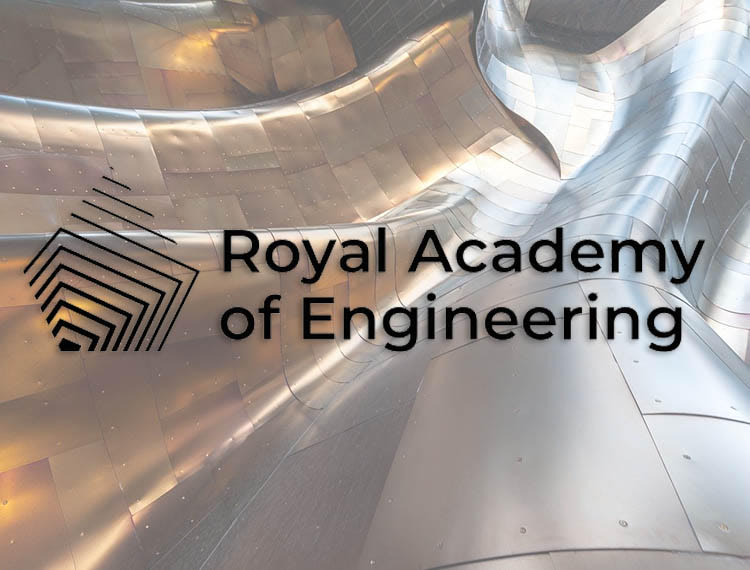Ten steps to net zero: Academy welcomes government plans

The Royal Academy of Engineering has welcomed the Prime Minister’s announcement of a ten point plan for a ‘Green Industrial Revolution’. A resilient, net-zero recovery will be vital in setting the UK on the right pathway to meet its target of net-zero territorial emissions by 2050, as set out in the National Engineering Policy Centre’s recent paper Beyond COVID-19: laying the foundations for a net zero recovery. While the pandemic is having a damaging impact on the economy and society, it also presents a window of opportunity to accelerate progress towards net-zero through changes to our built environment and our infrastructure systems, including energy, transport and digital communications.
Academy Fellows and researchers commented on the Prime Minister’s announcement:
Professor Nilay Shah OBE FREng, Vice-Chair of the National Engineering Policy Centre Net Zero working group, said:
“This is an ambitious and broad-ranging announcement. It’s good to see a holistic approach which aims to advance our capabilities across a broad range of domains. There is a good balance of supply, demand and infrastructure interventions planned. However, delivering net-zero in a just and economically beneficial way will require a huge engineering effort, a clear understanding of how the different interventions work together as a system, and accompanying societal and behavioural change. It requires a stable commitment by government to net-zero policymaking over the long term that builds on the short-term economic recovery and responds to the scale and pace of change required.”
Dr Shaun Fitzgerald FREng, Director of the Centre for Climate Repair at the University of Cambridge, said:
“The 10-point plan is to be welcomed since we urgently need a green industrial revolution. Much of the discussion is about reducing our emissions, and this is where we need to start. However, is it enough? Once we get to net zero, with carbon capture and storage for example being used to balance the unavoidable emissions, we will still be left with an atmosphere with too much CO2. We therefore need to do more and invest in active greenhouse gas removal solutions. We need to go harder at the climate than simply getting to net zero, although of course this is a necessary first step.”
Dr Dame Sue Ion DBE FREng FRS said:
While the ten point plan is encouraging to much of the energy industry sector, it doesn’t go nearly far enough in recognising the engineering and financial challenges associated with the journey to net zero. It is also missing an essential element which engineers would immediately recognize as important and that is the systems level thinking required to generate a deliverable roadmap. Each of the areas of focus in the ten point plan is still treated to a greater or lesser extent as a ‘silo’ with objectives and potential benefits articulated for just that element when what should be happening is consideration of the whole package as a system as they are all interlinked. For instance, while recognition is given to traditional renewables as a source of electricity to enable clean hydrogen to be produced, there is little recognition that small modular reactors potentially have a huge role to play here, not just the longer term more advanced high temperature systems.
The role nuclear power has in providing low-carbon electricity is gaining greater awareness and not before time! However, its significant potential in providing a solution to the more challenging aspects of the goal to achieve net zero has yet to receive the attention it deserves. Nuclear power offers so much more than low carbon electricity. It is vital this is acknowledged and built into the required system level thinking for meeting our future energy demands. This greater utility and generally unrecognised benefit from the heat as well as electricity offered by nuclear energy and not just the advanced systems but also SMRs, delivers real advantage compared with other low carbon energy sources provided it is driven forward to deployment.
There are huge expectations for offshore wind built into the 10 point plan but little recognition of the need to plan for times when even in the offshore environment there are days and nights when the wind is very low or isn’t there at all.
Professor Geoffrey Maitland CBE FREng, Professor of Energy Engineering at Imperial College London, said:
“It is good to see a significant focus on hydrogen as this is needed as the complement to wind to decarbonise domestic heating. Initially most of this will be ‘blue’ hydrogen made from natural gas which will need point eight, CCS, to remove the co-produced CO2. Producing hydrogen will be a key product of the green industrial clusters, being multi-purpose decarbonised transport and power as well as heating.
“Replacing our dwindling nuclear capacity, much of which is due to be decommissioned soon, is a key element of reaching net zero by 2050. We need to reinvent and reinvest in our nuclear reactor construction industry to provide clean baseload power to complement wind and other renewables and major employment in northern England.
“The carbon capture initiative is welcome news of significant investment in a key technology without which the UK will not achieve net zero by 2050 and where the UK is playing catch-up after two failed initiatives terminated by the government in 2011 and 2015. So it is good to see the recommendations of the 2018 CCS Cost Challenge Task Force being followed, with CCS being introduced at up to four industrial clusters involving essential but difficult to decarbonise processes, such as chemicals, cement and steel. These will be too late to impact the 4th carbon budget (2022-26) but will be essential to meet the 5th budget (2026-32) and onwards to achieve net zero emissions by 2050. The design and construction lead time is two to three years so it would have been better to have four or more clusters given the green light now to ensure the full impact of this essential technology by the early 1930s.
“The vision for hydrogen is inextricably linked to CCS as an enabler and the graded targets towards a fully-heated Hydrogen Town by 2030 is exciting, although there is potential with more investment to roll this out in at least six locations in the same timescale. Hydrogen, with its multiple green applications, is the ideal complement to increased wind investment. It has the advantage that ‘blue’ hydrogen from gas plus CCS can be enhanced and eventually replaced by ‘green’ hydrogen from excess cheap renewable electricity used to electrolyse and even cheaper feedstock, water.”
Professor Ian Fells CBE FREng FRSE said:
“The affirmation that nuclear power is ‘clean energy’ and the development of a new generation of small advanced nuclear reactors demonstrates the realisation that new nuclear will play a huge part in moving to net zero carbon.”
Dr Greg Alexander, Royal Academy of Engineering Research Fellow at Newcastle University, said:
“The commitment to carbon capture in the UK is very welcome, but as this type of support has been promised before and was removed at the last minute, we must ensure that it is delivered this time. As these carbon capture projects are largely planned for regions with a long and proud industrial heritage, but where there is significant unemployment now, there will need to be further support for training and reskilling so that jobs go to people living in the local community.
“Although the announcement is heading in the right direction, it is disappointing to see no specific mention of negative emissions technologies as ultimately net zero is only a first step towards going net negative; we need to be thinking about how we do that now.”












Responses